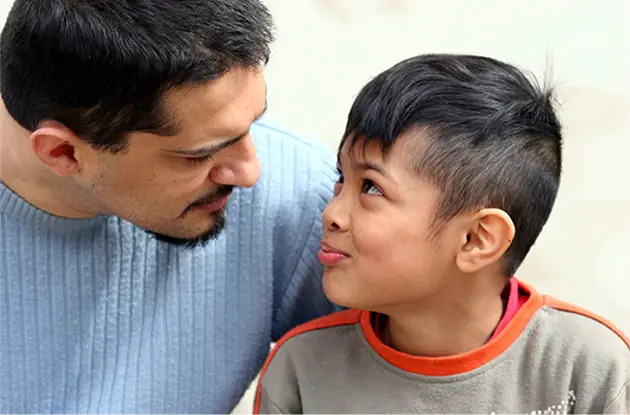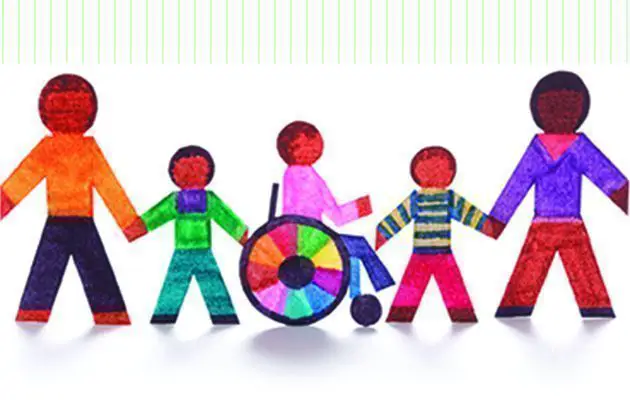How do we help our children understand their issues and teach them to advocate for themselves? Demystifying a child’s condition—that is, telling children what their issues are and helping them come to grips with it—is an important and often overlooked part of parenting an atypical child.
“Why am I so different?” When it’s time to discuss a child’s diagnosis with that child, there are myriad questions parents generally don’t ask—luckily, our expert beats you to the punch with answers.

For many families, talking to your child about the birds and the bees is not the hardest conversation you will have. For parents of atypical kids, the hard conversation will be the one that answers the question: “What is wrong with me?” “Why am I so stupid?” “Why don’t I have any friends?” or “Why am I so different?”
How do we help our children understand their issues and teach them to advocate for themselves? When and how do we start the process, and when can we begin to expect more self-reliance? This is a cluster of questions that I wish more parents asked.
Over the years, children have come to my office exhibiting a wide range of coping skills. The range of understanding their own strengths and struggles is wide and is not necessarily connected with their cognitive abilities or emotional intelligence. I’ve listened to remarkably eloquent 10-year-olds speak about their dyslexia and how difficult it is for them to read. And I have witnessed hyperactive and restless teens who have no real insight into how they tick. It’s not that they are not interested in learning about themselves; they have never had ‘the talk’ with their parents or a therapist. They have no clue what their diagnosis really means and are often still dependent on others to help them pave their way without having a real understanding of who they are and why they need the help they are receiving.
Sooner or later, though, all children will have to go out into the world and fend for themselves. Kids of all ages are more confident when they have a good understanding of their own needs and have done the hard work to learn to accept their differences.
Demystifying a child’s condition—that is, telling children what their issues are and helping them come to grips with it—is an important and often overlooked part of parenting an atypical child. It can be difficult to approach this subject; layers of defensiveness and avoidance build up over years of struggling so that many children can be unapproachable. Just as some parents have difficulty accepting that their child is different, it is even more challenging to help a child come to terms with his or her difference.
Kids do not want to be different. And yet, almost all children with a difference—be it a learning disability, ADHD, or autism spectrum disorder, among other issues—understand or sense that they are uniquely challenged. Having ‘the talk’ can help your child get to the next level.
Sometimes, though, we hold back from talking to our children about their diagnosis, hoping they will ‘straighten out’ or become more ‘typical’ so we won’t have to have the inevitably difficult conversation. But if your child is going from therapy to therapy on a weekly basis, he deserves the benefit of a good solid talk to explain what is going on in his brain, and what are some techniques to help him.
In reality, for many families, ‘the talk’ happens in stages, as the child grows and is more able to understand the information and adapt him- or herself to the demands of the larger world.
What Does Your Child Need to Know?
Here are the steps that kids need to go through in order to become fully active in their own care:
Step 1: Awareness
Knowing and accepting that everyone learns differently and has different needs. No one has it all. Learning that each person has unique
needs and everyone needs help in becoming the best person they can be. Talking to your child about different talents and pointing out the ways that they are uniquely talented (as opposed to a sibling or neighbor who excels in another area) is a good way to make the concept resonate.
Step 2: Getting Information
Finding the name for what they have and learning about it (if a name exists). This is an important step, as learning what dyslexia or ADHD or ASD are can elicit different reactions in children. Some may feel relieved that there is a name for what they have. Other children may be frightened or annoyed and scared that there is something ‘wrong’ with their brain. Finding the best way to deliver the information is important. Some parents can read their child a book that help describe a kid that struggles in similar ways; for others, a trip to an informed therapist can help pave the road. Children take comfort in hearing that they are not the only ones with this type of difference.
Step 3: Monitoring
Learning the best interventions and accommodations that work best for them. For many children, this is where a solid neuropsychological assessment can make the difference. A good assessment should have a list of optimal interventions, discussions about a child’s learning style, and a roadmap of accommodations that will work best for your child. It is advised that older children be part of the debriefing plan to learn more about themselves from a professional who has just tested them.
Step 4: Self-Advocacy
Knowing how to talk about it with others becomes important as a child grows up. This is a critical transitional step that helps a child move from dependence to self-reliance. This should begin to happen in high school, if not sooner. Children may need to practice how to speak to teachers, coaches, or other adults about their particular conditions. By the time teens are preparing for college, this information should be clear, crisp, and effective. I often coach older teens how to use scripts when speaking to high school teachers or college professors. Don’t hesitate to use a script and model how to discuss a child’s differences with others.
These stages may not happen in a neat, orderly sequence. In fact, a child may take until his 20s to get through all four stages. Ideally, we’d like our kids to have all four stages in their toolkit as they navigate through life.
“The best time to discuss a child’s disabilities and how they learn is as soon as they perceive a problem and it is identified,” says Nancy Bley, a special education consultant. “The most important thing is that kids get enough information and awareness about their own learning style and learning needs to be able to advocate for themselves. Even the youngest child needs to feel comfortable asking for help, the first step in self-advocacy.”
Even if your child isn’t lucky enough to be in a special needs school that builds his or her self advocacy skills, having ‘the talk’ with her on an ongoing basis in a supportive manner will go a long way to build a self-reliant and confident young adult.
• Find a helpful guide on another tough talk—menstruation
with your daughter with special needs.
• Read tips about monitoring changes in your child’s diagnosis.
• Find more useful advice about how to first discuss your child’s
diagnosis.





















